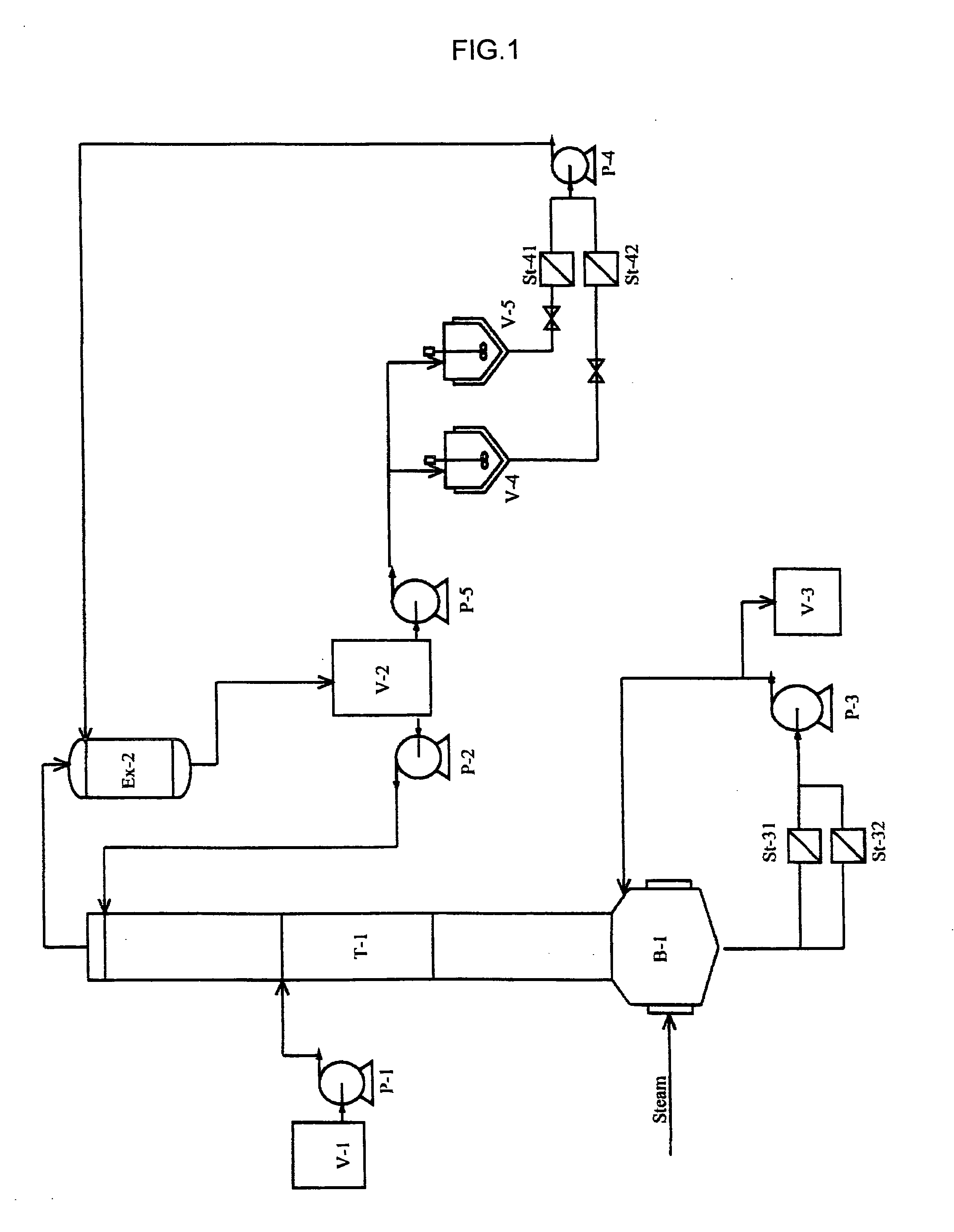Method of manufacturing (meth) acrylic acid
a technology of acrylic acid and manufacturing method, which is applied in the separation/purification of carboxylic compounds, organic chemistry, etc., can solve the problems of interference in continuous stable operation, inefficiency of adding a compound other than an objective product of (meth)acrylic acid to the process for producing (meth)acrylic acid, and inefficiency of purification step
- Summary
- Abstract
- Description
- Claims
- Application Information
AI Technical Summary
Benefits of technology
Problems solved by technology
Method used
Image
Examples
examples
[0041] The present invention will be specifically explained below in detail by reference to Examples. However, the present invention is not limited to the following Examples, and modifications which do not depart from the spirit and scope of the present invention are all included in the present invention. Evaluation methods used in experiments below are as follows.
Precipitation Time
(1) In the Case of Experiment 1
[0042] Formaldehyde (HCHO: manufactured by Wako Pure Chemical Industry Ltd.: aqueous solution of 37 mass %) was added to 500 g of acrylic acid (manufactured by Wako Pure Chemical Industry Ltd.) from which a polymerization inhibitor originally added was removed by a simple distillation. The addition amount of HCHO is shown in Table 1. Ion exchange water was further added thereto so that the concentration of water was 10 mass % when the sum of acrylic acid, HCHO and water was referred to as 100 mass %. In cases of Experiment No. 1-9 and No. 1-10 that were reference exampl...
experiment 1
[0047] The addition amount of HCHO and PTZ and the amount of acrylic acid (AA) for dilution at measuring polymerization initiation time were varied as shown in Table 1. The precipitation time, the amount of precipitate and the polymerization initiation time were measured by the method described above. The result is shown in Table 1.
experiment 2
[0048] The addition amounts of HCHO and PTZ and the amount of acrylic acid (AA) for dilution at measuring polymerization initiation time were varied as shown in Table 2. The precipitation time, the amount of precipitate and the polymerization initiation time were measured by the method described above. The result is shown in Table 2.
TABLE 1Experiment 1Additionamount ofAdditionAmount ofAmount ofPolymerizationExperimentHCHO (ppmamount ofAA forPrecipitationprecipitateinitiation timeNoby mass)PTZ (mass %)dilution (g)(at 20° C.)(g)(at 95° C.)1-11011000No precipitation019.5 Hours for 3 days 1-210011000No precipitation0 20 Hoursfor 3 days 1-35001100050 Hours0.05 18 Hours 1-420001100037 Hours0.36 15 Hours 1-535001100030 Hours0.45 12 Hours 1-65700110004.5 Hours 1.79 4.5 Hours 1-71000011000 1 Hour5.4820 Minutes 1-8100000.0110No precipitation018.5 Hours for 3 days 1-9001000——18 Minutes1-10011000No precipitation0 20 Hoursfor 3 days
[0049]
TABLE 2Experiment 2Additionamount ofAdditionAmount ofAm...
PUM
| Property | Measurement | Unit |
|---|---|---|
| Fraction | aaaaa | aaaaa |
| Fraction | aaaaa | aaaaa |
| Fraction | aaaaa | aaaaa |
Abstract
Description
Claims
Application Information
 Login to View More
Login to View More - R&D
- Intellectual Property
- Life Sciences
- Materials
- Tech Scout
- Unparalleled Data Quality
- Higher Quality Content
- 60% Fewer Hallucinations
Browse by: Latest US Patents, China's latest patents, Technical Efficacy Thesaurus, Application Domain, Technology Topic, Popular Technical Reports.
© 2025 PatSnap. All rights reserved.Legal|Privacy policy|Modern Slavery Act Transparency Statement|Sitemap|About US| Contact US: help@patsnap.com

